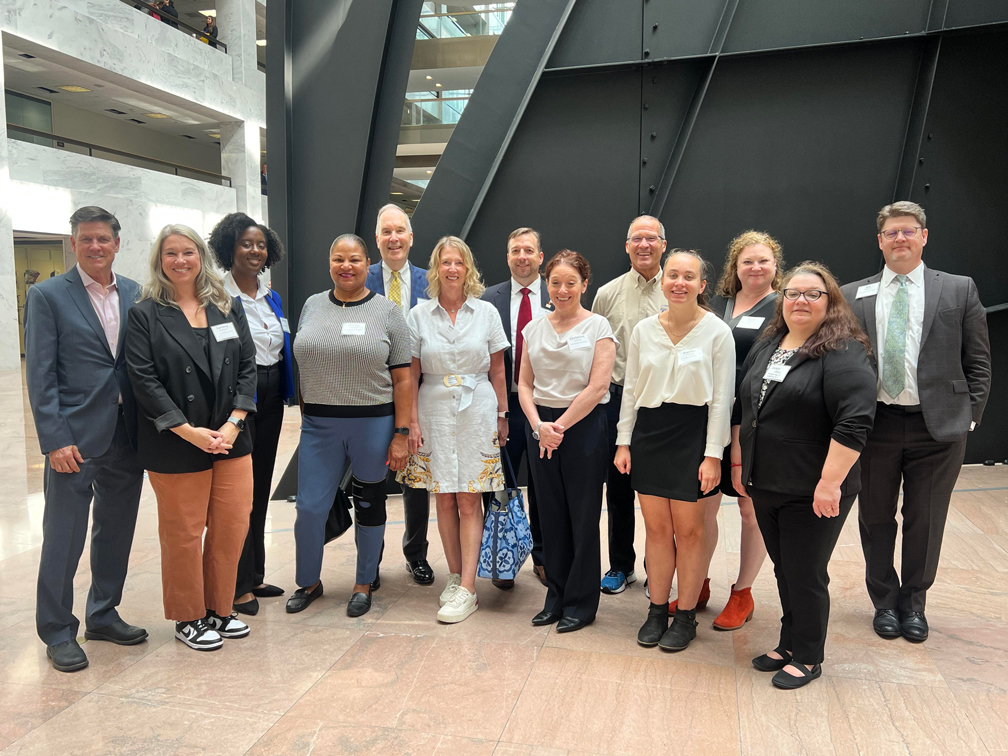Which nonprofits will thrive? Which will merely survive? Look for the clues.
Second in a series of five
The first installment of “Growth out of a Crisis” opened an important conversation for the social good community about the COVID-19 crisis.
Here’s some good news: Most nonprofit organizations will survive this crisis.
Please hold your applause, though, because the joy might not last long. Survival doesn’t necessarily mean a return to fundraising health. It likely means a gradual recovery in the short term, followed by a longer term of flat or declining revenue. Of course, that’s better than the worst news, which is that a small number of nonprofits will have to close their doors forever.
What if I told you that 1 in 10 nonprofits will emerge from COVID-19 having gained market share and having expanded their donor base, often on a massive scale?
Is that good news or bad news? Well, it’s both. It’s fantastic news that a handful of organizations (and we don’t yet know who they are) will refuse to settle for surviving. They’ll follow in the footsteps of organizations like International Justice Mission, Wounded Warrior Project, Guide Dogs for the Blind, Shriners U.S., and others that have experienced how crisp, quick decision-making and focusing the organization to create energy and momentum can transform the fundraising culture for the long-term.
The sad part is, why will only a fraction come out on the other side of this stronger than ever before? My colleague Alan Clayton at Philanthropy & Fundraising International, who has pored over 350 case studies from 1,000 clients worldwide, knows why.
The very best fundraising leaders understand that in times of crisis, there is not only an opportunity in the marketplace, there is also an opportunity internally. There might never be a better time to improve the quality of the organization’s fundraising while making fundraising efforts better-embraced by the entire organization for years to come. And what distinguishes the handful of truly great fundraising organizations from the rest are their leadership behaviors — before, during and after a crisis.
Let’s start with the “before” part. Most nonprofit organizations find crisp decision-making difficult, being designed to make thorough, collaborative programmatic decisions, driven by consensus, because they need to get every detail right. Depending on the mission and their programs, oversights can cause irreparable harm. So they’ve designed thorough, detailed processes to avoid error.
By contrast, every great fundraising department is home to an ambitious achiever culture. Theirs is a fast-moving environment, because they’re in the emotions business. Their job is to manage simplicity as opposed to complexity, and because of their sales and marketing mindset, they’re really competitive.
Now, most nonprofits go through life with the board and CEO maintaining the delicate balance between these two cultures. But (and here’s the “during” part) in the kind of crisis we’re in now, marked by worry and confusion about the money needed to keep the organization going, the person who is really good at managing when things are fine is generally not the best person to be leading in the midst of turmoil. This is the best opportunity fundraisers will have to bang on the table and say, “We don’t have time for this!”
This is not to say that fundraisers should run the whole organization, of course. But they should be allowed to drive fundraising in ways that they just aren’t able to in “peacetime.” Alan asserts that because of the culture of nonprofits, in normal times organizations must pay a lot of attention to aloof people. Aloof, in this case, is an acronym for “amateurs with a lot of opinions on fundraising.” 🙂 But it’s really clear from the research that, to turn things around in a crisis, the organizations that have succeeded are the ones who realize it’s time to get out of the way and let the fundraising professionals lead.
None of this is easy. In fact, it’s incredibly hard. But the leadership behaviors that win the day now will determine which organizations merely survive and which thrive for years to come.
Could your nonprofit, or your client if you’re an agency partner to the social good community, be that 1 in 10 that has a V-shaped recovery after the COVID-19 crisis has passed? Yes! Here are a couple of things to start immediately.
Focus the organization to create positive energy. It’s incredibly easy to lose focus in the worry-driven now. It might seem logical to reassure donors that “we’re still here,” but it’s also dangerous because the fundraising can get lost in the process. There should be one objective and one objective only: More donors and more dollars. If you mix fundraising with education and branding, you’re slowing down your ability to test quickly and determine a) What can we become the best at if we had a lot more funds? b) What do we love doing? c) Will people give money to solve this problem?
Maintain and build momentum. Momentum comes from focus and energy, and a crisis can create focus and energy like never before. After all, this is likely how the organization was founded. Moved by the tragedy of disease, a natural disaster, or whatever the current mission of the organization, someone banged the table, said “We don’t have time for this!” and started fundraising. The rest is history.
If you’d like to go further, here’s a highly distilled four-step process for leading growth out of a crisis, based on organizations that succeeded in doing it:
Step 1: Appoint a team of experts, fundraisers and money people. Give them the authority to create the ideas, make the decisions, then let them do it.
Step 2: Move quickly. COVID-19 will be here for a long time, and as we’ve already begun to see, people won’t stop giving. In fact, they will likely give more. But the opportunity to turn things around internally and transform fundraising exponentially will be relatively short.
Step 3: Have the right people leading the fundraising function. Focus on the money and make pragmatic decisions based on that. Get to the hard facts, rock bottom as the case may be, and do what has to be done.
Step 4: Get people throughout the organization on the emotional front foot, letting them feel the fear, align with the energy and then focus on doing what’s needed.
Be aware that this process could lead to some of the hardest decisions an organization ever makes. We’re talking about more than just layoffs or furloughs. It could be the choice between funding a beloved project now or investing in fundraising for the long term. The numbers could be stark: If we invest heavily in direct mail or digital acquisition, or try direct response TV or telemarketing, we could be three times as big in five years’ time, and that could help us save millions of people as opposed to a few hundred or a few thousand now.
This stuff is not for the faint of heart. But neither are the problems that we in the social good community have devoted our lives to solve. If you’re interested in attending the free “Fast-Track Fundraising Growth” webinar coming up on June 25 where we will dig deeper into these areas, please visit https://www.philanthropyfundraising.com. In the meantime, I’m working on my next blog summarizing Session Three of the series, growth planning. Whatever you do next, challenge yourself to be the fundraiser who will bang on the table and lead people, emotionally and pragmatically, through the fundraising challenges of this crisis. Your voice and your skills are needed now more than ever!
Kyla Shawyer, CEO Philanthropy & Fundraising North America & Creative Consultant, DSIL Global is a passionate advocate for sharing and collaboration in the social good space. After 14 years leading nonprofits, including Operation Smile, the Resource Alliance and the IFC global nonprofit community, Kyla has seen firsthand the magic and impact that can be created when we break down internal barriers and open our minds and our hearts to new ways of learning and working together.



